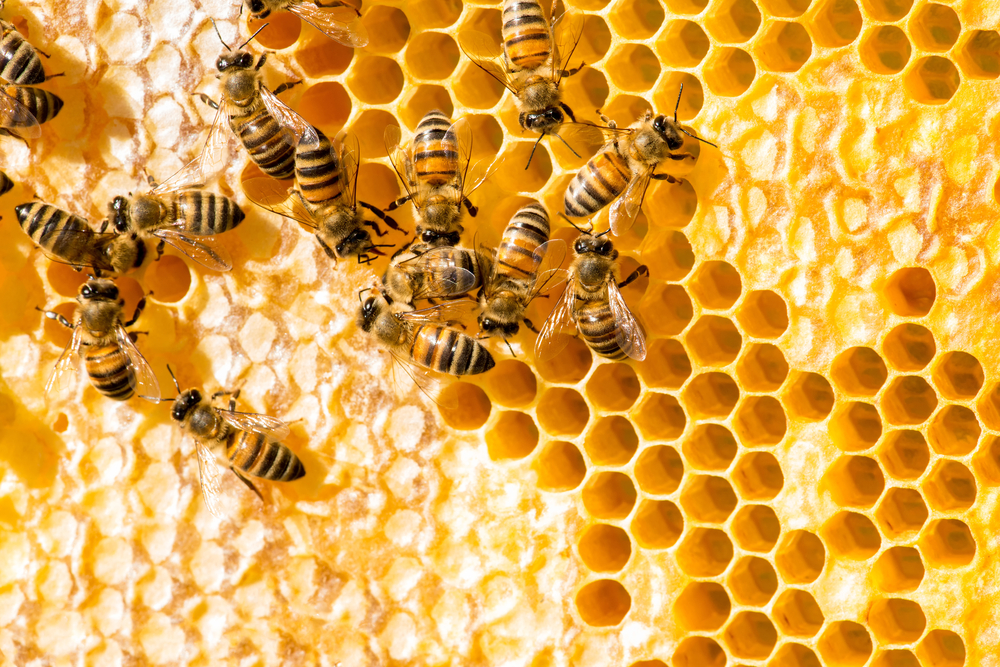Urban Beehives are Helping Detect Air Pollution
As foraging worker bees flit around the neighborhood in search of nectar and pollen, they unwittingly pick up pollutants that then linger in the hive’s honey. Luckily, Hina Alam writes for the Canadian Press, trace amounts of lead, zinc and copper left by this process are too low to have much of an impact on humans enjoying the sticky treat. (Unless, of course, you happen to be a honey superfan who eats more than two cups per day.) Still, a new study published in Nature Sustainability suggests these trace elements offer an accurate measure of surrounding communities’ air quality, positioning the insect hubs as inexpensive, plentiful and, admittedly, unlikely tools in the global fight against pollution,
To gauge honey’s potential as an indicator of air pollution levels, scientists led by Kate Smith of the University of British Columbia’s Pacific Center for Isotopic and Geochemical Research spent four years gathering samples from more than 20 hives situated across six Vancouver neighborhoods, reports Veronique Greenwood reports for The New York Times. Given the fact that foraging bees typically venture out within a one- to two-mile radius, Geek.com’s Stephanie Mlot notes, the honey they produce serves as a direct reflection of their localized environment.
Predictably, Yessenia Funes explains for Earther, the team found that honey originating from more industrial areas yielded higher concentrations of elements, including lead, aluminum, zinc and iron. Less anticipated, however, was these elements’ ability to lead researchers straight to the source of given contamination.
“The [isotopic] fingerprint we see in the honey downtown does not match any of the local, naturally occurring lead,” Smith tells Funes. “It doesn’t match our local geology. And what that’s telling us is that the sources of metal are likely due to human activity.”
According to Inverse’s Sarah Sloat, the study showed that trace levels of pollution-related elements increased among hives situated in regions with heavy traffic, high urban density and industrial shipping ports. In other words, Greenwood writes for the Times, the scientists think that fuel burned by ships docking at Vancouver’s harbour, as well as vehicle emissions left by cars crossing the city’s streets, generate much of the lead evident in honey. Given the differences between these lead isotopes and those that occur naturally in the region, the team further argues that the element’s presence must derive from man-made sources.
The team also identified high levels of manganese in honey retrieved from hives at the outskirts of Vancouver. As Sloat adds, manganese is closely linked with pesticide use and, similarly to the lead found in downtown hives, can likely be attributed to human activity.
In 2017, Smithsonian.com’s Rachel Kaufman explained that Vancouver’s thriving bee scene owes much to the nonprofit Hives for Humanity organization, which strives to build connections via beekeeping. Initially, the group reached out to PCIGR to ensure its honey was safe for consumption, as outsiders had expressed concerns that the hives were located in poor urban neighborhoods rather than rural regions.
Lab director Dominique Weis, aided by then-PhD student Smith and several other colleagues, used wooden coffee stirrers to collect honey samples, as metal tools posed a potential contamination risk. Next, the team dissolved the honey in a solution, heated it to 7,000 Kelvin and, finally, analyzed the material’s contents with the help of a mass spectrometer.
The team found no evidence to suggest the urban honey was unsafe to consume. “We’re talking about tens of parts per billion [of lead], on the high end,” Weis told Kaufman. “As far as consumption goes, there’s no cause for alarm. Our instruments are just very, very sensitive.”
In conjunction with the new study, the earlier research speaks to beehives’ emerging significance as indicators of regional air quality. Speaking with the Canadian Press’ Alam, Smith explains that unlike the qualitative warning provided by a “canary in a coal mine,” hives have the potential to provide quantitative data that speaks to their immediate surrounding. Moving forward, the team will work to understand how honey analysis can operate in tandem with more traditional methods such as air and soil monitoring.
“Cities are a very dynamic environment,” Smith concludes. “We have issues and challenges like climate change and all of these factors will contribute to how the landscape of the city changes. And we can continue to monitor this by monitoring honey from honeybees.”

